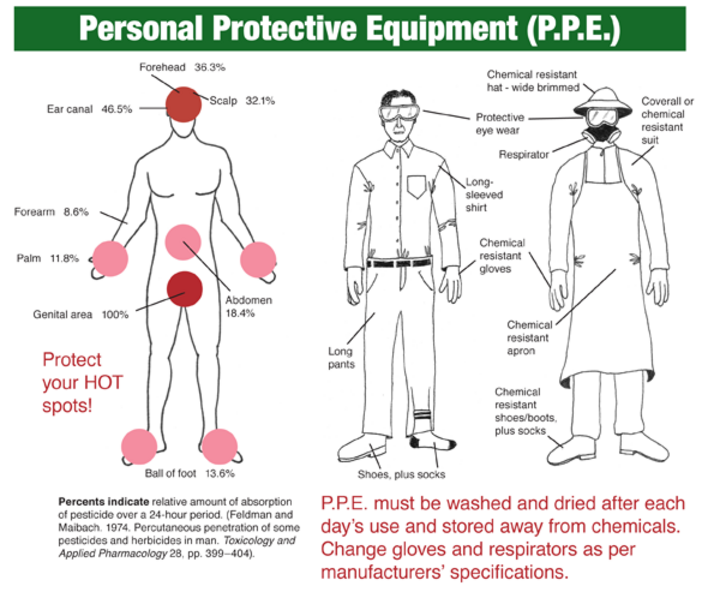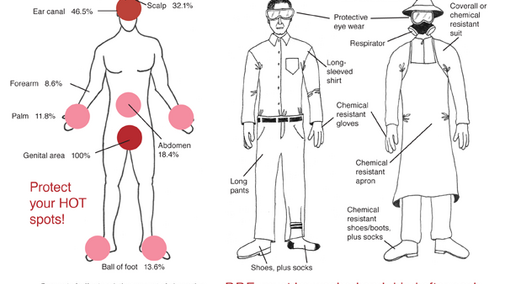Besides using common sense, perhaps an applicator’s most important protection is wearing the appropriate personal protective equipment (PPE).
Read the label to know what PPE to wear when applying a particular product. If the label gives no PPE requirements, at a minimum wear a long-sleeved shirt, long pants, shoes, socks, and chemical-resistant gloves. Goggles, respirators, and chemical-resistant aprons also may be appropriate. Combinations of PPE may provide up to 90% reduction in pesticide exposure.
Additional Resources
- Laundering Clothing after Applying Pesticides
- University of Nebraska-Lincoln Pesticide Safety Education Program
- Pesticide Safety articles in CropWatch


